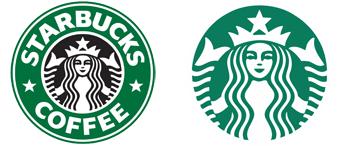Contact us today and discover how we can help revolutionize your business with B2B e-commerce.
Contact us today and discover how we can help revolutionize your business with B2B e-commerce.
Referencias:
- Harvard Business Review. “The Psychology of Brand Rejection and Acceptance”.
- McKinsey & Company. “Strategic Leadership in Rebranding Initiatives”.
- Parsons School of Design. “Visual Identity and Emotional Connection in Modern Branding”.
- Setblue. “10 Rebranding Stories from Top Brands That Succeeded” .
- Mercadeo Magazine. “Casos de éxito: Los mejores ejemplos de rebranding” .
- Marketing Inteli. “Caso Airbnb: Transformación de la Industria del Alojamiento” .
Jaguar’s recent rebranding has sparked a viral debate, triggering memes, mockery, and criticism on social media. This phenomenon is not unique. Brands like Instagram, Pepsi, Airbnb, Old Spice, and Starbucks have all faced initial rejections when redesigning their identities. However, many of them turned the controversy into a resounding success. This article explores why rebranding generates so much resistance at first, how brands can overcome these challenges, and what lessons we can learn from these global cases, with insights backed by Harvard, McKinsey, and Parsons School of Design.
A logo is not just a drawing; it is a strategic symbol that represents the values, vision, and essence of a brand. According to Parsons School of Design, figurative logos or those that tell a story tend to be more appealing to people without technical training, as they are perceived as familiar and easy to understand. However, this familiarity can be a double-edged sword. A logo that is too narrative or illustrative runs the risk of “saying too much” and ultimately communicating nothing. Moreover, as highlighted in a McKinsey report, brands that do not evolve toward more modern and minimalist aesthetics may fall behind in markets that demand simplicity and relevance.
Jaguar exemplifies this transition. Its new minimalist logo, part of the “Copy Nothing” strategy, aims to stand out in a modern luxury market, distancing itself from the figurative and nostalgic. Although this change has sparked adverse reactions, it is designed to position the brand at a higher and more exclusive level, following global market trends.

In 2011, Starbucks made a bold decision by removing the word “Starbucks Coffee” from its logo, leaving only the iconic green siren. This change aimed to reflect the brand’s diversification into food, beverages, and lifestyle products beyond coffee. Although it was initially criticized, especially by coffee purists, this redesign allowed Starbucks to position itself as a global brand, instantly recognizable in any market. Today, the siren is an icon of contemporary culture, a testament to the power of a clean and modern design.

In 2018, Dunkin’ Donuts simplified its name to Dunkin’. This change, criticized by some as unnecessary, marked a transition to a more modern and minimalist identity, focusing on quick beverages and breakfasts. According to McKinsey, this rebranding helped the brand connect with younger, urban consumers, demonstrating that less can be more when it comes to strategic design.

Pepsi has changed its logo more than a dozen times in its history. Its 2008 redesign was criticized as “unnecessary” and “expensive,” and was even compared to an emoji. However, this move allowed Pepsi to modernize its image and connect with younger audiences, reaffirming its relevance in a competitive market. According to Harvard Business Review, these periodic changes are essential for brands that want to remain top-of-mind for consumers.

Airbnb’s “Bélo” logo, introduced in 2014, was initially the subject of ridicule and memes due to its abstract design. Despite the backlash, the brand successfully communicated the values of belonging and community that define its business model. Today, Airbnb is not only a leader in the tourism sector but its visual identity has become a global icon, demonstrating that strategic consistency can turn criticism into an advantage.

When Instagram redesigned its logo in 2016, abandoning its vintage aesthetic, many users expressed rejection of the radical change. However, the minimalist and vibrant design reflected the platform’s evolution into a more dynamic and visually appealing ecosystem. Today, its logo is an example of how modern design can exceed expectations and become a universal standard.

Old Spice was seen as an outdated brand until it adopted an irreverent and humorous approach in its rebranding in 2010. This change revitalized the brand, attracting a younger audience and generating a significant increase in sales. According to McKinsey, this case highlights the importance of emotionally connecting with new audiences by redefining a brand identity.
One of the biggest risks in rebranding projects is subjecting strategic decisions to collective judgment within the organization. While involving multiple perspectives may seem like a democratic approach, in practice, it often leads to paralysis, confusion, and mediocre results.
According to a study by Harvard Business Review, projects involving too many decision-makers are 32% more likely to be delayed or fail. This happens because subjective opinions and a lack of technical knowledge dilute the strategic purpose of the project, diverting resources into endless internal debates instead of focusing on the end goal.
In the case of external consultants like MarkLovers, this challenge is even more pronounced. Since external teams are responsible for designing and guiding the strategy, it is essential that the client organization trusts their expertise and approach.
According to McKinsey & Company, companies that delegate strategic direction to professional external teams achieve better results, as they bring an objective, well-founded perspective aligned with global best practices.
How to Avoid Diluting Strategic Focus
To maximize the impact of a rebranding, organizations must establish clear processes focused on strategic leadership. Key recommendations include:
Transforming Chaos into Success
Rebranding is a powerful tool that reshapes the future of brands. Cases like the ones presented here show that initial resistance is a temporary obstacle on the path to relevance and success. The key lies in leading with confidence, trusting experts, and maintaining strategic consistency.
At MarkLovers, we understand that every rebranding is unique. If you’re considering transforming your brand, our team is ready to help you create an identity that not only stands out but also leads. Because, as these cases demonstrate, a well-executed rebranding doesn’t just redefine an image; it redefines a legacy.
Referencias:
- Harvard Business Review. “The Psychology of Brand Rejection and Acceptance”.
- McKinsey & Company. “Strategic Leadership in Rebranding Initiatives”.
- Parsons School of Design. “Visual Identity and Emotional Connection in Modern Branding”.
- Setblue. “10 Rebranding Stories from Top Brands That Succeeded” .
- Mercadeo Magazine. “Casos de éxito: Los mejores ejemplos de rebranding” .
- Marketing Inteli. “Caso Airbnb: Transformación de la Industria del Alojamiento” .